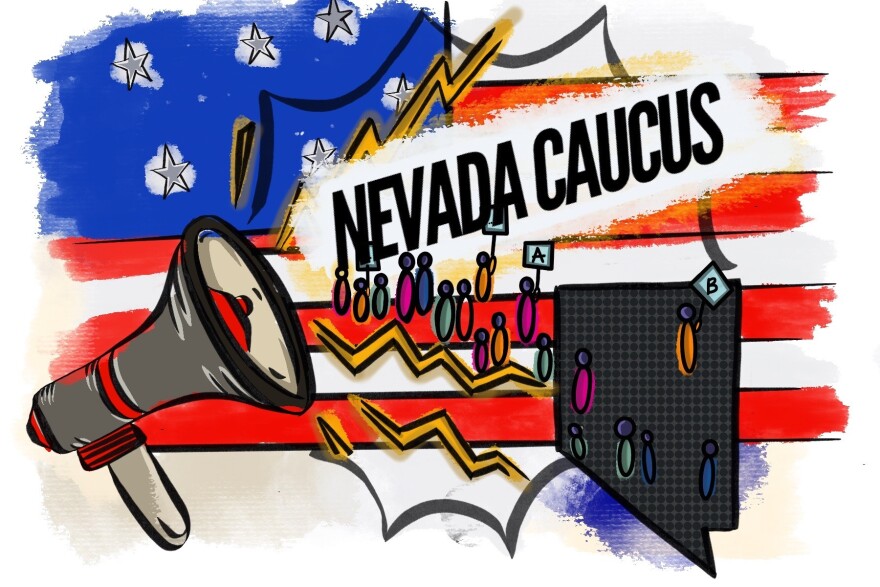Nevada’s Democratic Party is the first in the country to offer early caucusing.
Early Caucusing: Feb. 15-18
From February 15, Democrats in the Silver State will have the opportunity to select who they believe should be their party's presidential nominee. Using a ranked choice ballot, voters will select their candidate preferences in a fashion similar to the full caucus on February 22.
Shelby Wiltz is the caucus director for the Nevada State Democratic Party. She said they decided to add early voting to cater to the needs of voters.
“Early voting is extremely popular and important amongst all voters in Nevada in a general election,” Wiltz said. “Typically during our general elections, we are seeing anywhere between 50% and 65% of all people who participate, participating early. So we wanted to make sure that our caucus process reflected our voters.”
Participants can choose to vote in three different languages: English, Spanish and Tagalog. 82 sites will be available for early caucusing across the state.
Those early votes will then be added to the total number of votes made on caucus day.
Officials with the Democratic Party said providing an early caucusing option will help create a more inclusive voting process for those who are unavailable the day of the caucus.

Caucus Day: Feb. 22
Officials are stressing to those who are participating to show up at the precinct location assigned to them based on their home address.
Voters can register and update their registration at their precinct starting at 10 a.m. People who are currently 17 years old, but will turn 18 by the general election, can still participate.
Participants will be handed a presidential preference card, and at noon, the precinct chair will start the process.
Each person will gather with others who also support the candidate of their choice. A presidential nominee becomes viable by having at least 15% support. If the candidate isn’t viable, the people supporting the candidate will then have the opportunity to choose a different candidate, or form another group.
It is up to the precinct chair to make accommodations to the process for those who may have disabilities.
Results
Officials with the Nevada State Democratic Party estimate that the caucus process will take a few hours, with results broadcasted the same day.
After Iowa’s caucus, some Nevada voters were shaken. The combination of an app used to tally and report the caucus results had a coding error. This delayed and inaccurately reported the caucus results. It took four days to correct and file the results.
The morning after Iowa’s caucus, the Nevada State Democratic Party sent out a message addressing the worries by stating, "What happened in the Iowa caucus will not happen in Nevada.”
Ultimately, the party terminated its contract with Shadow Inc., the developer behind Nevada and Iowa’s caucus apps.
Since then, the party has dumped the app in favor of a tool that will be pre-loaded onto an iPad. However, how that tool is different from the app, and whether or not party volunteers will receive training, is unclear.
To find an early voting location, visit caucus.nvdems.com.
Editor's Note: When this story first aired on KUNR, it contained a line claiming Nevada began holding primaries in 2008. That was an error. State lawmakers passed a measure requiring major parties to hold a closed caucus in 1981. However, the state's caucuses were often held later in the nomination process, limiting the Silver State's influence. It was in 2008 that Nevada essentially rebranded it's caucus system by securing a spot as the third state in the country to hold a nominating contest, creating the inaugural "First in the West" caucus. That correction is reflected in the audio above.






